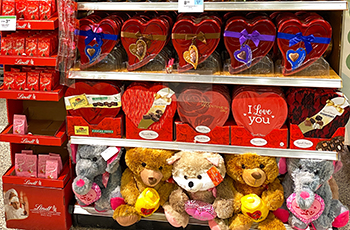<p>By: Tom Duffy, Senior Advisor, Industry Relations, FMI </p><div class="mg-image–circular" style="float:right;margin:10px;"><img src="https://www.fmi.org/images/default-source/blog-images/seasonal-general-merchandise.jpg?sfvrsn=dfe0cab3_1" alt="seasonal general merchandise" sf-size="100" /></div><p>If you’re going to do it, do it right.<br /></p><p>That phrase extends to many aspects of life and business. In the food retail industry, the advice especially resonates in category management, as retailers must determine what products to carry and how to best merchandise them for optimal sales.<br /></p><p>Take, for instance, seasonal general merchandise. At a time of thin margins and increased competition across the omnichannel, having a strategy in place to buy, display and promote seasonal products can lift sales and shoppers’ perception of a store
as a valued resource. <br /></p><p>While some grocers have ceded this category to mass or online stores, others have found that with some investment and planning, seasonal GM can pay off with bigger baskets and rings. “There are some grocers who put a stake in it and recognize that
this is a place they can win,” says Mike Sims, executive vice president of Far East Brokers and Consultants in Jacksonville, Fla. <br /></p><p>Winning in this space can lead to higher sales and profitability. “Keep in mind that this is the smallest part of overall grocery sales but it also has the highest profit margin and sales,” Sims points out.<br /></p><p>How can retailers put their proverbial stake in seasonal general merchandise and come out ahead? Sims offers some advice:<br /></p><h5>Get buy-in from leadership:<b> </b></h5><p>Engaging and aligning those in senior management with your seasonal general merchandise strategy gives buyers the support they need to discover and order on-trend items that will draw shoppers’ attention. <br /></p><h5>Make it easy for shoppers to find and buy seasonal GM:<b> </b></h5><p>In addition to the seasonal aisle, retailers can effectively cross-merchandise seasonal items in other parts of the store. It’s been done for years with things like wine bags in the wine aisle but can be creatively executed in other ways, too, and
for virtually all occasions and times of the year. <br /></p><h5>Send a signal that seasonal merchandise is valued:<b> </b></h5><p>Just as a retailer can create an impressive shelf set for seasonal and holiday items, how they discount those items once the season is over makes an impression. Keeping up with appearances and avoiding sloppiness shows that a store places importance on
these categories. <br /></p><h5>Engage associates to manage seasonal GM:<b> </b></h5><p>Here, too, maintaining seasonal offerings requires a broader commitment by store leaders who can identify and train associates to manage these segments. This is especially important given the timely nature and frequent turnover of seasonal assortments.
<br /></p><h5>Recognize the broader potential of each season or holiday:<b> </b></h5><p>Just as the seasons vary, so do opportunities. At Halloween, shoppers are all about candy, with some decorations. People are willing to spend more for Valentine’s Day, though—adults buy gifts for other adults on that holiday. <br /></p><h5>Find an “identifier” seasonal product or products:<b> </b></h5><p>Some retailers have engendered loyalty in these segments by specializing in certain seasonal offerings, whether it’s outdoor furniture or kayaks in summer or premium gift wrap in winter. For the shopper, these items become an annual harbinger of
a season – and a tradition. <br /></p><h5>Research your suppliers:<b> </b></h5><p>Buy from reputable factories that meet quality production standards and consider consolidating purchases from fewer suppliers to better manage stock and avoid supply chain issues. <br /></p><h5>Evaluate:<b></b></h5><p>Leverage data to see how products are performing and how your store is performing against other markets. This will help you continue to build your seasonal GM program and reputation.<br /></p><p>Even with some of the headwinds that are facing the industry, retailers can accelerate these GM categories. As consumers cut down on shopping errands during the pandemic, and, more recently during a time of high inflation, they have relied on grocers
more and discovered new nonfood items, including seasonal products for their home and families. If the strategy is right, so is the timing.</p><p>If you or a team member would like to discuss joining the FMI Nonfoods efforts, please contact <a href="mailto:tduffy@fmi.org" data-feathr-click-track="true" data-feathr-link-aids="['56d8b0ba7c1fea1102916cfd']">Tom Duffy</a>, Senior Advisor, Industry Relations.</p>
[#item_full_content]



